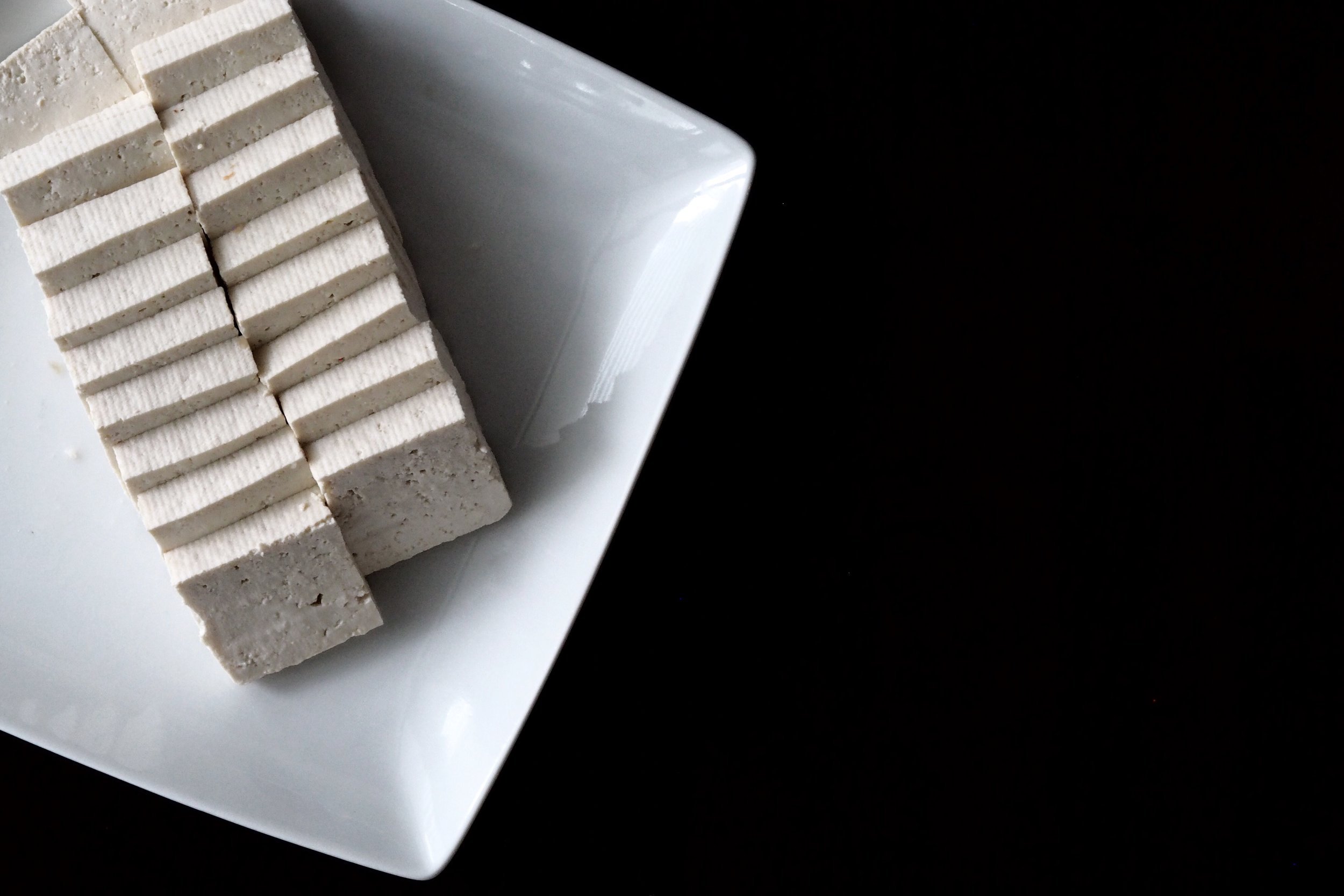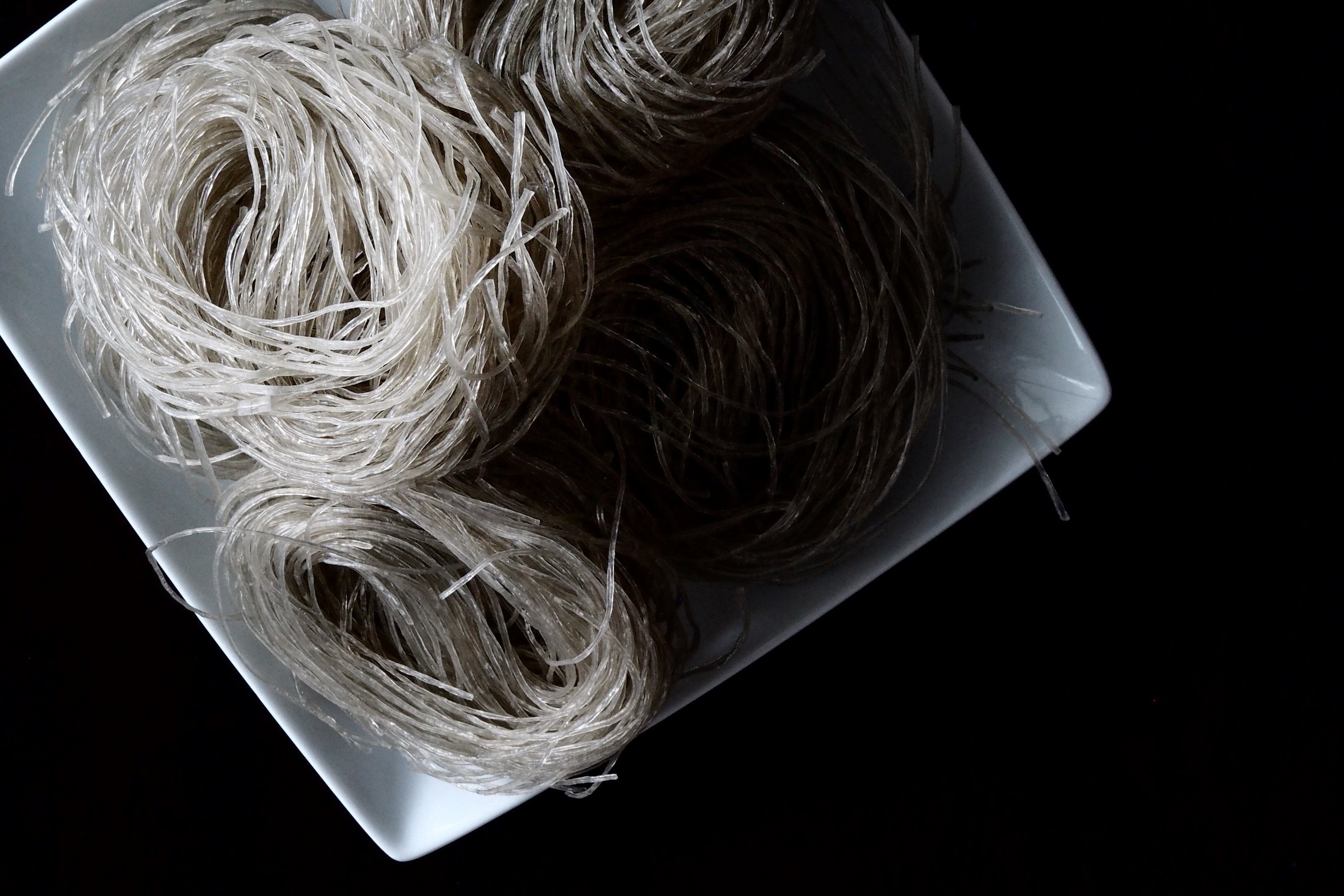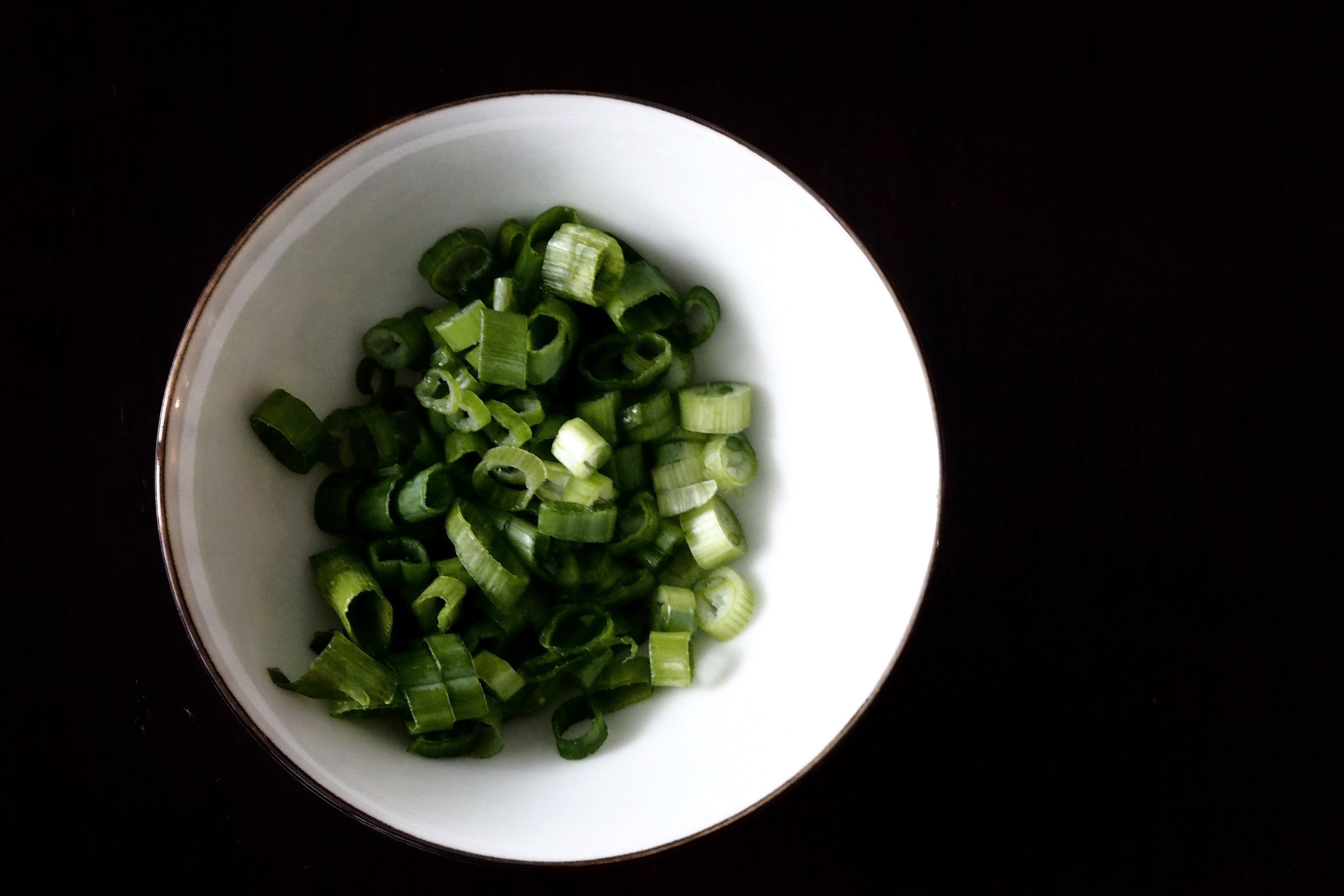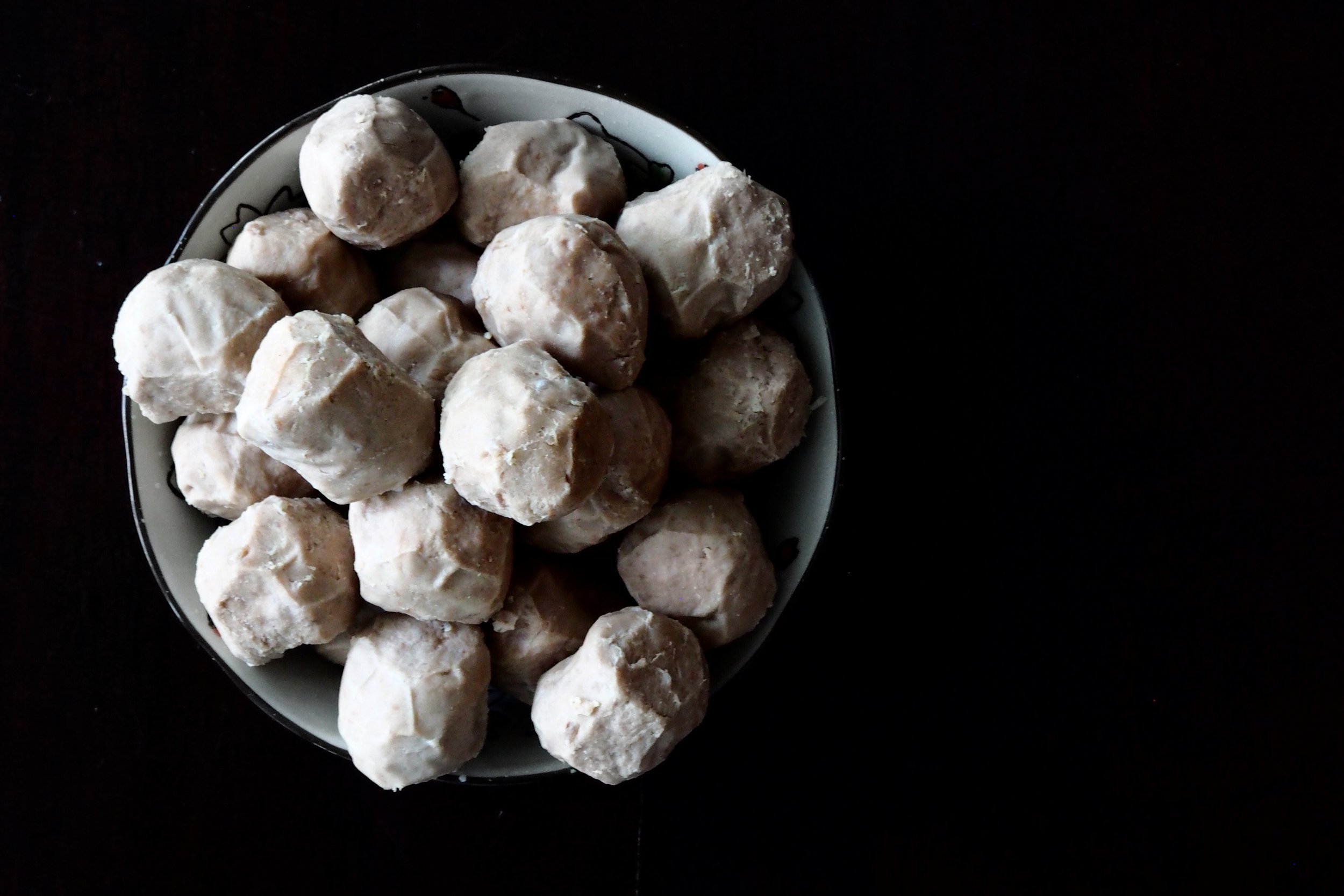The Hot Pot
It's the doldrum days of winter. Chilly, grey days have replaced the bright lights of holiday festivities, and the novelty of snow and cold weather fashion has worn out its welcome. For days like these, nothing beats the chill like the warmth of good company around a simple one-pot meal. Today, we're making a hot pot.
Nearly every Asian culture has their version of a hot pot. The spicing and ingredients differ from region to region, but the foundation remains the same: the communal cooking of ingredients interspersed across the table in a pot of bubbling broth placed in the middle of the table. It's, perhaps, unique to Asia because of the heavy cultural emphasis on community and sharing. The closest Western analogue I could find was fondue, in all of its cheesy, carb-dipping glory.
Some of my fondest family memories revolve around our hot pot meals (though, to be honest, food plays a central theme in a good portion of all of my memories). The occasions always felt special - the overflowing platters of food, the special dipping instruments, the precariously wired electric wok full of soup. In truth, despite the elaborate table settings, preparation couldn't be more simple.
I'm a Vietnamese-Chinese Canadian by origin (though, I like to say half-Viet, half-Chinese, 100% Canadian). Despite that, my family's hot pot of choice hails from Japan. Ours is somewhere between a sukiyaki - which uses an onion and soy-infused sweet broth with already-cooked beef - and a shabu shabu - where the broth is more neutral and sliced raw meat is gently swished through the pot to cook a la minute. This is not a traditional dish by any means, though Vietnamese cuisine does have its own hot pot dish in the form of a series of dishes known as bò 7 món (beef 7 ways); one course involves the table-side cooking of thinly-sliced raw beef in a vinegared broth.
Regardless of cuisine, hot pot is a meal that speaks of bountiful food, warmth, and community. Our round table would groan under the weight of the plates ready for cooking. Watercress, cabbage and beansprouts. Thin bean noodles and thick dumplings. Shrimp, squid, beef, perhaps some pork. Anything was fair game.
The table-side preparation of a hot pot is more akin to a carefully orchestrated dance than simple cookery. Every family has their own order and method for placing of ingredients into the electric wok in an order meant to ensure even cooking. For my family, it was first the tougher vegetables and mushrooms, perhaps the dumplings. Then the hardier of the meats and seafood. Then the noodles. Only the thin slices of meat would remain raw, ready to be placed into little, long-handled wire baskets reserved specially for this meal; all the better to cook the meat to one's liking without loosing the choice morsel in the chaos.
Anything expertly scooped from the pot was given a quick dunk in sauce before eating. A soy and ginger based sauce was often at the ready, but my favourite was a simple bowl of beaten raw egg. Though perhaps grisly by North American standards, it's common practice in Japan and very, very delicious. The egg also serves a completely practical purpose: a cooling mechanism for quicker consumption.
Gradually over the course of the night, the ingredients would dwindle, and so would the level of the broth. Soon, all that remained was a murky liquor infused by all of the ingredients long passed - not to be wasted! Ambitious eaters could opt to enjoy the last drops of the meal over rice.
What cannot be truly described in words is the magic of cooking and eating as a community. It's an act that places as much emphasis on eating together as it does creating together. And whether you're eating with friends or family, the warmth and camaraderie of the evening makes the food taste all the better.
Try It At Home
Despite my waxing nostalgic for special hot pot implements, hot pot night at home is an easy affair. The only special thing required is an electric pot or burner capable of keeping broth at a simmer throughout the meal. Just don't wear white. Between the cooking, slurpy noodles, and dipping sauces, things can easily become a sartorial nightmare.
Choose ingredients as oddly Asian or comfortably common, just make sure there's a lot of it. You can simplify prep with a visit to any Asian grocery store, just look for trays of thinly sliced meat, likely in the frozen section. But, if you have a favourite butcher, prep only involves a good cut of lean meat, a freezer, and a sharp knife. Freeze the meat for 1-2 hours until it is firm, but not frozen, then slice away.
Though as a child I have very little recollection of drinks beyond juice, in my wiser adult years I can now recommend crisp, lager-style beers and clear Asian liquors (like Korean soju, Chinese baiju, or Japanese sake) as great pairs for the meal. Or, if you'd like to mirror one of my favourite eat-out spots for hot pot in Vancouver, serve some prune juice at the end of the meal for digestion.
The Art of Hot Pot
The true art of the hot pot comes from subsequent adventures. Start with our recipe, which yields a mild, sweet and salty broth accompanied by accessible ingredients. Then, start to change out the ingredients to suit your tastes: tradition be damned!
The easiest area for culinary play are the dipping sauces. If raw egg isn't your thing, try soy, ginger, and a little rice wine vinegar. Take a trip to Korea with gochuchang paste, sesame oil, and mirin. Bring a Malaysian/Thai influence to your table with a combination of peanut butter, fish sauce, and sambal olek. Or, perhaps, throw all caution to the wind, set up a little sauce mixing bar and experiment.
Then move on to the broth base. Eschewing the soy, sake, and mirin for Chinese chilli in oil and star anise yields a more robust, spiced broth. Basil, lemongrass, and ginger transmutes the once-Japanese broth into Thai. Find out what happens when you use pork broth instead of chicken. Experiment with Japanese dashi.
Finally, there are the ingredients. Anything is fair game. Anything. Particularly the proteins. Make an all-seafood hot pot with cut squid, shrimp, and mussels. Substitute the noodles with dumplings. Try slices of thinly-sliced pork shoulder or lamb leg.
There are no rules. Your hot pot should be as unique as you are.
Recipe
Serves 4 people
Ingredients
For The Broth:
1 cup (250ml) sake
1 cup (250ml) mirin
1/4 cup (60ml) soy sauce
2 cup (500ml) of dashi, chicken, or vegetable broth
1 medium onion, halved and sliced
2 medium carrots, peeled and sliced into 3 cm rounds
To cook:
Napa cabbage, 1/2 head, cut into 2-inch wide slices
Watercress, small bunch
Mushrooms: Asian varieties such as enoki, shiitake, maitake, or king
Firm tofu, about 1/4 package per person
Sliced spring onion
Beef, thinly sliced. We recommend eye of round, tri-tip, or sirloin. About 100-150g per person.
Noodles: udon, shirataki, Korean yam noodles, and glass noodles are good choices
The Payoff
The Broth:
Can be prepared either table-side or on the stove before placing on table.
Using a neutral-tasting oil, such as grapeseed, caramelize the onions and carrots on medium-high heat in a medium-walled pot or wok.
Once the vegetables have developed a light-brown colour, add the sake, mirin, soy sauce, and broth. Stir to combine, then bring the mixture to a boil.
Place wok in the middle of table on burner. Set to simmer.
The Cook:
It's best practice to reserve different coloured cooking chopsticks for each plate of ingredients. Cross-contamination is never fun.
Order of operations typically begin with the hardest, longest to cook ingredients. This is typically napa cabbage, mushrooms, tofu, and any long-cooking proteins such as shrimp, squid, or tripe. Add noodles and dumplings midway through - or at end- of meal.
Guests use chopsticks to swish a piece of beef into the simmering broth until cooked to the right doneness.
Ingredients pulled from the hot pot get a quick dip in egg - or sauce of your choosing - before eating
There are no rules.
Words by Nicholas Wong, Photos by Abhishek Dekate








